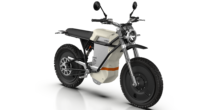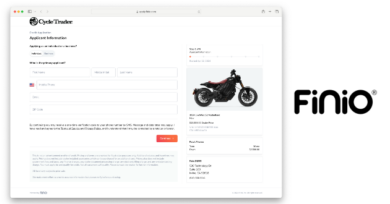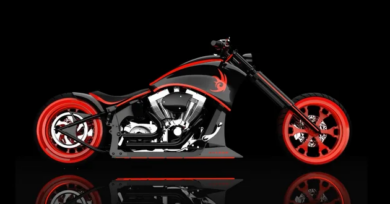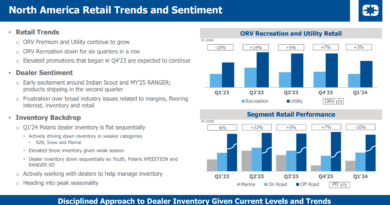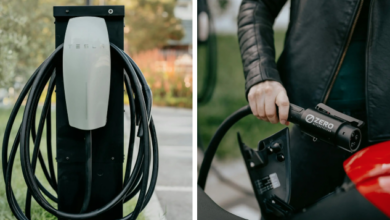PWC market sides heavily with pre-owned
Yamaha survey shows 75% of current owners bought used
Yamaha has always valued extensive surveying of PWC consumers. Much of the company’s recent focus has been on consumers with aging craft, and/or who entered the sport through the previously owned market. The data the company collected, and what it says about those buyers and their willingness to stay in the sport, may hold a key to growing the overall PWC market.
Tapping the used market
According to data compiled from more than 40,000 current owners, a surprising three-quarters of them are used PWC consumers. They are buyers taking advantage of low prices to either enter into the market for the first time or expand an existing fleet. Certainly there are plenty of available boats. The industry topped out at more than 200,000 units per year during its peak in the mid-1990s, and many of those craft now fill the pages of Craigslist, eBay and local Boat Trader publications. Yamaha in particular notes the company’s own reputation of top-notch reliability almost works as a Catch 22 in this regard. Rather than break down and force an enthusiast into an upgrade situation, many PWC are still going strong, allowing that buyer to put off the decision.
The data, however, reveals that 50 percent of these buyers purchased two-stroke watercraft, a class that, at least theoretically, should be approaching the end of its usable life. Of buyers surveyed, the vast majority indicated that their next purchase will be a modern four-stroke model.
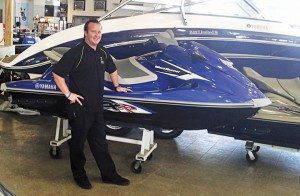
“In surveying these customers, we know that they will re-up again and that 80 percent of them said that purchase will be a four-stroke,” Yamaha national marketing manager Bryan Seti said. “So these used buyers, they kind of got in on the cheap, but they’re staying in the industry, and they’re going to be buying four-stroke technology.”
Yamaha began to cultivate this very market eight years ago with the introduction of the VX platform.
“When we introduced the VX in 2004, that product was brought to market with the idea that we were going to kind of seed the market and bring new customers in,” Seti said. “And hopefully they’ll be trading up in the future.”
What will it take to make this huge, untapped cache of potential new-model consumers pull the trigger? At this end of the spectrum, it’s not performance, nor is it apparently luxurious or high-tech appointments. According to Seti, surveys reveal that consumers ranked six things as most important to get them to move up to a new craft — reliability, versatility, stability, storage, comfort and price.
In short, this buyer wants an affordable, versatile craft that’s dependable. Said Seti: “They’re not looking for a lot of bells and whistles.”
Influence on product direction
Survey data further reveals that while dealer loyalty or proximity to a dealer might have brought customers in the door, it’s brand loyalty that typically takes precedence after a purchase. Of those consumers already owning Yamaha product, an overwhelming 92 percent would stay with the brand.
“A lot of customers are just brand-loyal,” said Kevin Roberts, sales consultant at Mission Motorsports in Irvine, Calif. “If they’ve been on a Sea-Doo or a Yamaha since the ’90s, they’re still on Sea-Doos or Yamahas now. You typically don’t see those people switch.”
This combination of factors — the desire for a more practical craft and loyalty to the brand — had tremendous influence on the Yamaha product direction for 2012.
“We want to protect the ground that we currently have,” Seti said, “to continue to be the No. 1 choice in the high-volume segments. That winning equation we have is that we want to offer the right features. We’re not about thinking we know what features customers want in the future. We’re going to ask them what they want, and those are the features we want to deliver on. And then we want to become that No. 1 choice for the trade-up buyer.”
That desire is reflected in the brand’s 2012 FX series makeover. Rather than focus on bold new features or performance, the manufacturer tweaked practical items like the craft’s saddle, reboarding step, reverse function and handling.
Still, the allure of the affordable, used model will likely always prove a challenge.
“There are a lot of young people that want to have this kind of fun,” said John Wehrle, owner of Stumpy’s Yamaha in Neptune, N.J. “When they look at the price tag of new watercraft, then compare it to a used model for $1,000, if they get lucky they can fix up that used boat and get out on the water. That means a lot, because the money is just not out there for the young enthusiast.”
For the industry’s existing consumer, however, the FX approach may just be right on target. “People are buying $10,000 watercraft instead of a $75,000 boat, car, or fancy vacation,” Wehrle said. “They’re buying simple stuff to keep it affordable, yet still have a blast.”



